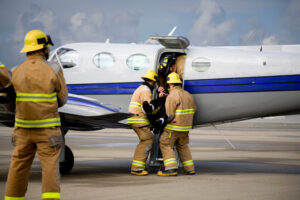Standard Lapse Rate – No pressure…well, lots of it
Atmospheric pressure has important effects on flying, which include being both a key weather element and a “tool” used to lift an aircraft and operate instruments. Knowing properties innate to standard lapse rate and atmospheric pressure can greatly benefit flight planning calculations and knowing its influence on flight performance.Properties of Standard Atmosphere
Though air is exceptionally light, its weight and mass are not immune to the effects of gravity. The force exerted by air is equal in all directions due to its fluid nature. This is the foundation of air pressure. At sea level, under standard conditions, the average pressure exerted by the weight of the atmosphere is approximately 14.70 pounds per square inch (psi) of surface. At higher altitudes, the air is less dense and pressure decreases – the atmospheric pressure at 18,000 feet is only half of what it is at sea level (you know, since there is less air above you exerting pressure). Altitude pressure can also vary as a result of time, location, and temperature. In an effort to make these variations more tangible, the standard lapse rate was developed.Atmospheric Pressure
Standard lapse rate is where the standard pressure comes into play. At sea level, the standard is founded on a surface temperature of 59 °F or 15 °C and a surface pressure of 29.92 inches of mercury or 1,013.2 mb. The International Civil Aviation Organization (ICAO) has established a worldwide standard temperature lapse rate that assumes the temperature decreases at a rate of approximately 3.5 °F / 2 °C per thousand feet up to 36,000 feet, which is approximately –65 °F or –55 °C. Beyond this, the assumption is that the temperature is constant to 80,000 feet. A standard pressure lapse rate was also determined, noting that pressure decreases at a rate of approximately 1″ Hg per 1,000 feet of gained altitude, up to 10,000 feet.Remembering the standards is important as they provide a better understanding of the atmosphere we operate within, allowing insight into not only current, but expected conditions, and thus we are able to better prepare.
RELATED READING
RELATED CTS TRAINING









